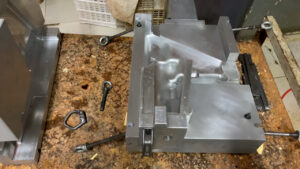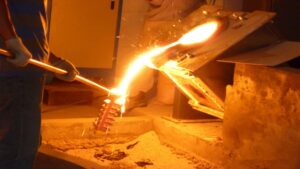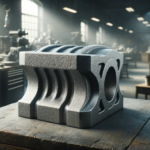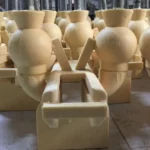Language:
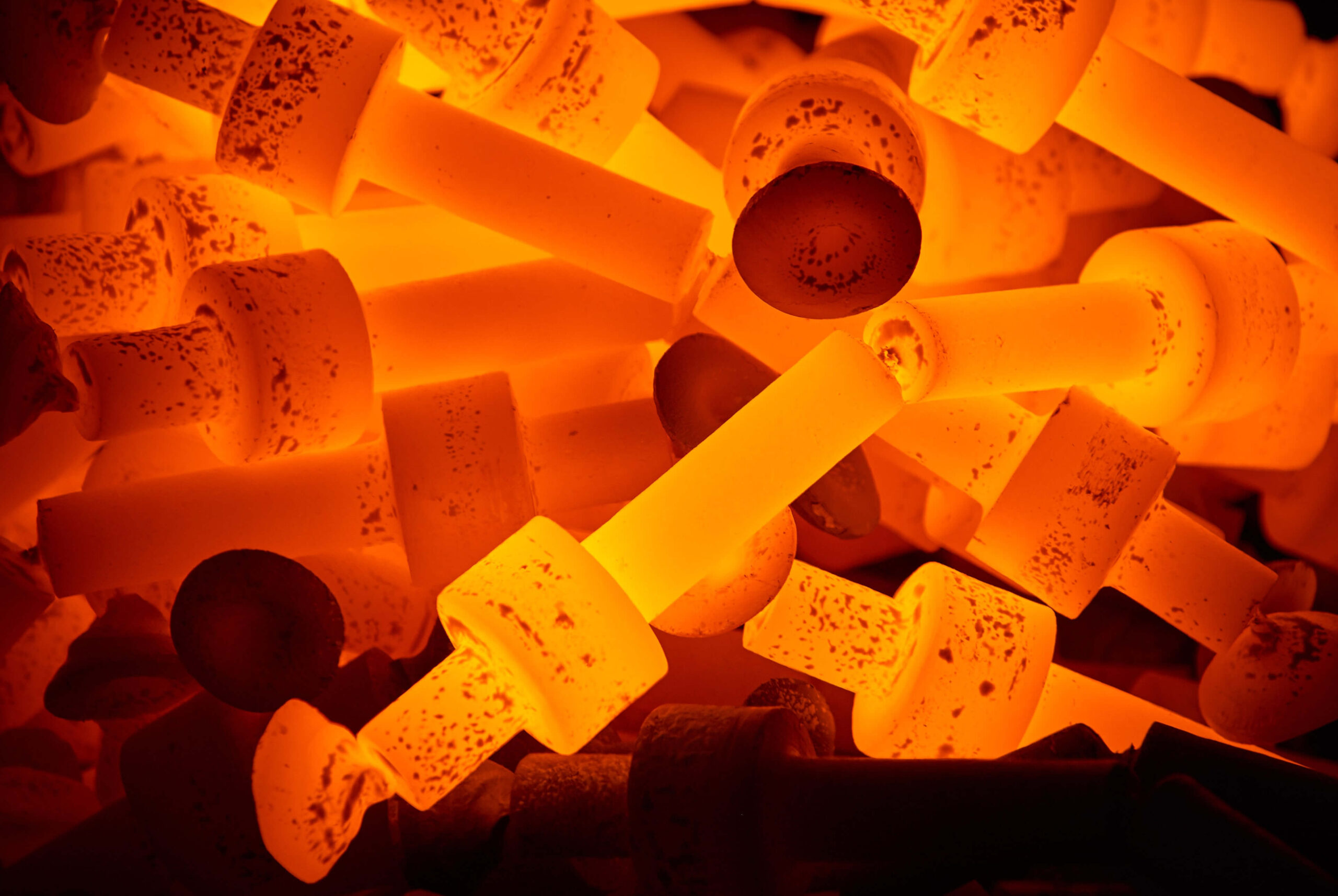
Exploring the Crucial Role of Heat Treatment in Precision Investment Casting
Investment casting, also known as lost wax casting, is a process of creating metal parts with high precision. This intricate method, dating back thousands of years, is celebrated for its ability to produce metal components with exceptional accuracy and detail. However, the journey from a wax model to a robust metal part is not complete without a critical phase – heat treatment.
Heat treatment, a series of controlled heating and cooling operations, plays a pivotal role in defining the final characteristics and performance of investment cast parts. It is more than just a finishing touch; it’s a transformative process that imbues the metal with the desired mechanical properties such as strength, ductility, and hardness. This process is vital in tailoring the material properties to suit specific applications, ranging from aerospace components to intricate medical devices.
The importance of heat treatment in investment casting cannot be overstated. It not only enhances the inherent qualities of the metal but also rectifies internal stresses and inconsistencies that arise during the casting process. By altering the microstructure of the metal, heat treatment ensures that each casting meets or exceeds the stringent requirements of its intended use, thus bridging the gap between artistry in design and resilience in function.
Table of Contents
Improving mechanical properties
One of the primary objectives of heat treatment in investment casting is to significantly enhance the mechanical properties of the cast metal. Properties like strength, hardness, and ductility are crucial for the functionality and longevity of the castings. Various heat treatment processes are employed to achieve these desired characteristics:
- Annealing: This process involves heating the metal to a specific temperature and then cooling it slowly. Annealing is used to increase ductility and reduce hardness, making the metal more workable. It’s particularly beneficial for metals that will undergo further machining or shaping.
- Quenching: Quenching involves rapidly cooling the metal after it has been heated. This process increases the hardness and strength of the metal. The rapid cooling is typically achieved by immersing the metal in water, oil, or another cooling medium.
- Tempering: Often following quenching, tempering involves heating the metal to a temperature below its critical point and then cooling it at a controlled rate. This process is used to decrease the brittleness introduced by quenching and to achieve a balance between hardness and ductility.
Each of these processes can be fine-tuned according to the specific application for which the part is intended, allowing for a high degree of customisation in the properties of the cast metal.
Stress Relief
The investment casting process inherently involves uneven cooling and solidification, which can induce internal stresses within the metal. These stresses, if not addressed, can lead to distortion or failure of the part during its service life. Heat treatment plays a critical role in stress relief:
- Uniform Structure: Controlled heating and cooling during heat treatment help in achieving a more uniform microstructure throughout the metal, reducing internal stress points.
- Reduced Risk of Distortion and Cracking: By relieving internal stresses, heat treatment minimizes the risk of distortion or cracking, which is especially important for parts with complex geometries or thin sections.
Enhanced Durability and Performance
Proper heat treatment significantly improves the durability and performance of investment cast parts:
- Wear Resistance: Heat-treated metals typically exhibit enhanced wear resistance, which is crucial for parts that will be subject to continuous or heavy use.
- Fatigue Resistance: Components that undergo cyclic loads benefit from heat treatment as it increases their resistance to fatigue, thereby prolonging their service life.
- Corrosion Resistance: Certain heat treatment techniques can improve the corrosion resistance of metals, an essential factor for parts exposed to harsh environmental conditions.
- Application-Specific Performance: For sectors like aerospace and automotive, where component failure can have serious repercussions, heat treatment ensures that parts meet the highest standards of durability and reliability.

Microstructure Control
The microstructure of a metal significantly influences its mechanical properties, and heat treatment is a key process in controlling and modifying this microstructure:
- Heating and Cooling Regimes: By carefully managing the heating and cooling cycles, including the rate and duration at specific temperatures, the microstructure of the metal can be altered. This involves changing the size, shape, and distribution of the grains within the metal.
- Grain Structure Alteration: The process can refine the grain structure, making it finer, or induce a phase transformation, depending on the desired outcome. For instance, in steels, heat treatment can transform austenite to martensite, significantly increasing hardness.
- Customisation of Properties: Through microstructure control, properties such as toughness, hardness, and ductility can be tailored to specific requirements. This customisation is crucial for metals used in applications where performance under stress, temperature extremes, or wear resistance is critical.
Homogenisation of Material
Heat treatment also plays a crucial role in homogenising the material of investment casting parts:
- Addressing Inhomogeneities: Metals and alloys, following the casting process, can exhibit inhomogeneities or segregations. These inconsistencies might arise from differential cooling rates or variations in composition.
- Uniform Distribution of Alloying Elements: Heat treatment involves heating the entire metal part to a temperature where these segregations can dissolve back into the matrix. Subsequent controlled cooling ensures a more uniform distribution of alloying elements.
- Enhanced Consistency: This homogenisation leads to greater consistency in the mechanical properties of the part across its entirety. It is especially important for alloys used in critical applications where uniformity in performance is paramount.
Removing Residual Casting Defects
Heat treatment can also be instrumental in reducing or eliminating residual casting defects:
- Porosity and Inclusions: Casting defects like porosity (tiny holes in the metal) or inclusions (foreign material within the metal) can weaken the part. Certain heat treatment processes can reduce the impact of these defects.
- Refinement of Defects: For example, a well-controlled heat treatment process can cause the growth of grains around the porosity, thereby ‘tightening’ the structure and reducing the weakness caused by these voids.
- Improving Quality and Reliability: By diminishing the effects of casting defects, heat treatment enhances the overall quality, reliability, and performance of the investment cast parts. This is crucial for industries where part failure can have severe consequences, such as in aerospace or medical devices.
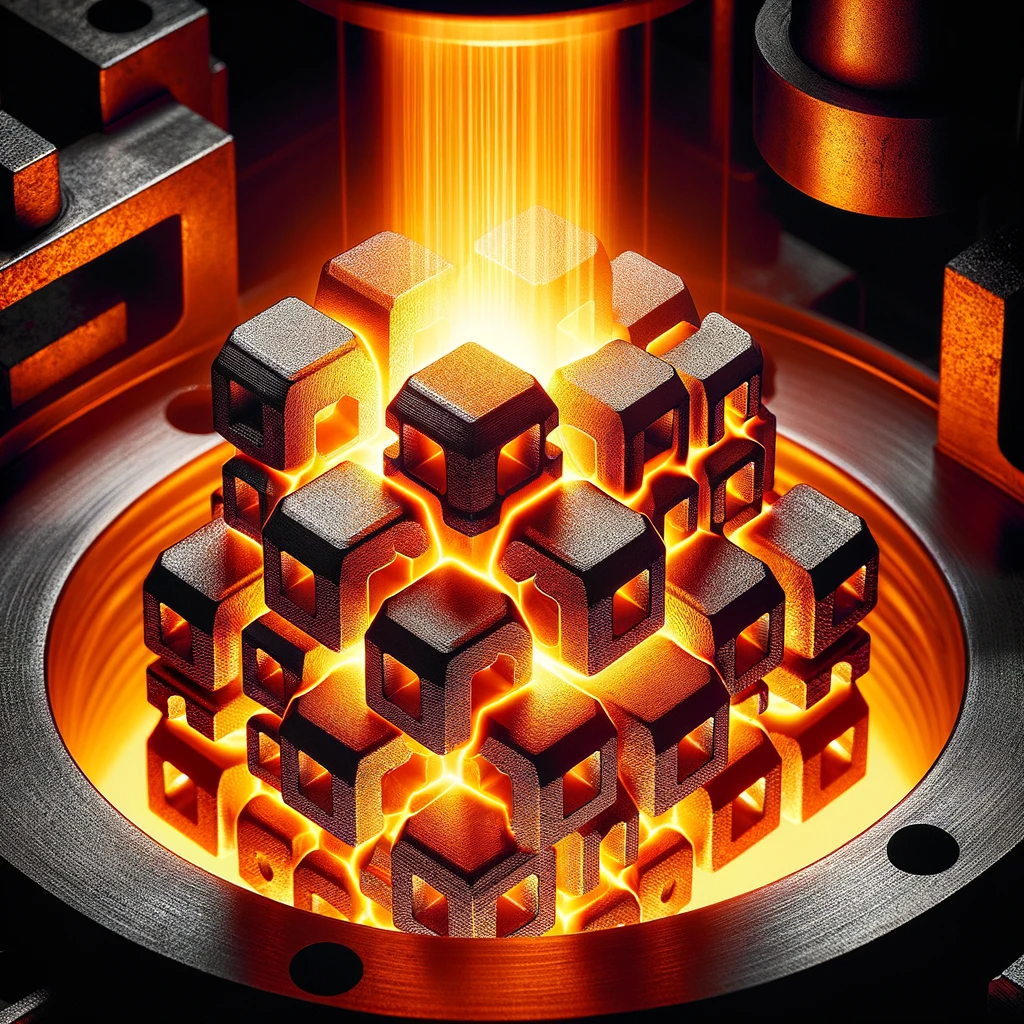
Meeting Industry Standards and Specifications
Many industries require that lost wax casting parts undergo specific heat treatment processes to meet stringent standards and specifications, especially in critical applications like medical devices, military hardware, and aerospace components.
Customisation for Specific Applications
Different applications may require cast parts with specific properties. Heat treatment provides the flexibility to customise the properties of the castings according to the specific needs of the application.
Our Advantages
Taiyuan Simis Investment Casting Co., Ltd. exemplifies the crucial role of heat treatment in enhancing the quality and performance of precision casting parts. As a leader in the field of investment casting, also known as lost wax casting, Simis utilises heat treatment to masterfully control and enhance the properties of its metal parts, underscoring the company’s commitment to excellence.
Microstructure Control: At Simis, heat treatment is adeptly employed to manipulate the microstructure of metals. By precisely controlling the heating and cooling cycles, the company expertly alters the grain structure of the metal, optimising properties like hardness, toughness, and ductility. This meticulous control is pivotal for the production of high-performance parts that are required to withstand demanding applications.
Homogenisation of Material: Recognising the importance of material consistency, Simis leverages heat treatment to achieve homogenisation of its cast alloys. This process ensures a uniform distribution of alloying elements, addressing any inhomogeneities or segregations that might occur post-casting. The result is a product that offers consistent quality and reliability, a hallmark of Simis’ commitment to excellence.
Removing Residual Casting Defects: Simis also utilises heat treatment to diminish the effects of common casting defects such as porosity and inclusions. This approach significantly enhances the overall integrity and quality of the cast parts, ensuring they meet the high standards expected in industries like aerospace, automotive, and medical devices.
Enhancing Mechanical Properties and Stress Relief: At the core of Simis’ heat treatment process is the goal to improve mechanical properties and relieve internal stresses. By doing so, the company ensures that its investment castings exhibit superior durability, performance, and resistance to wear, fatigue, and corrosion.
Customised Solutions: Tailoring its heat treatment processes to meet specific client needs, Simis Investment Casting demonstrates its capability to deliver customised solutions. Whether it’s fine-tuning for specific applications or adhering to stringent industry standards, Simis’ expertise in heat treatment is a testament to its ability to meet diverse and challenging requirements.
In conclusion, Taiyuan Simis Investment Casting’s utilisation of advanced heat treatment techniques is a significant factor in its ability to produce high-quality, precision cast parts. The company’s focus on microstructure control, homogenisation, defect reduction, and enhancement of mechanical properties showcases its strengths and positions Simis as a leader in the investment casting industry, consistently delivering products that exceed client expectations in terms of quality and performance.
